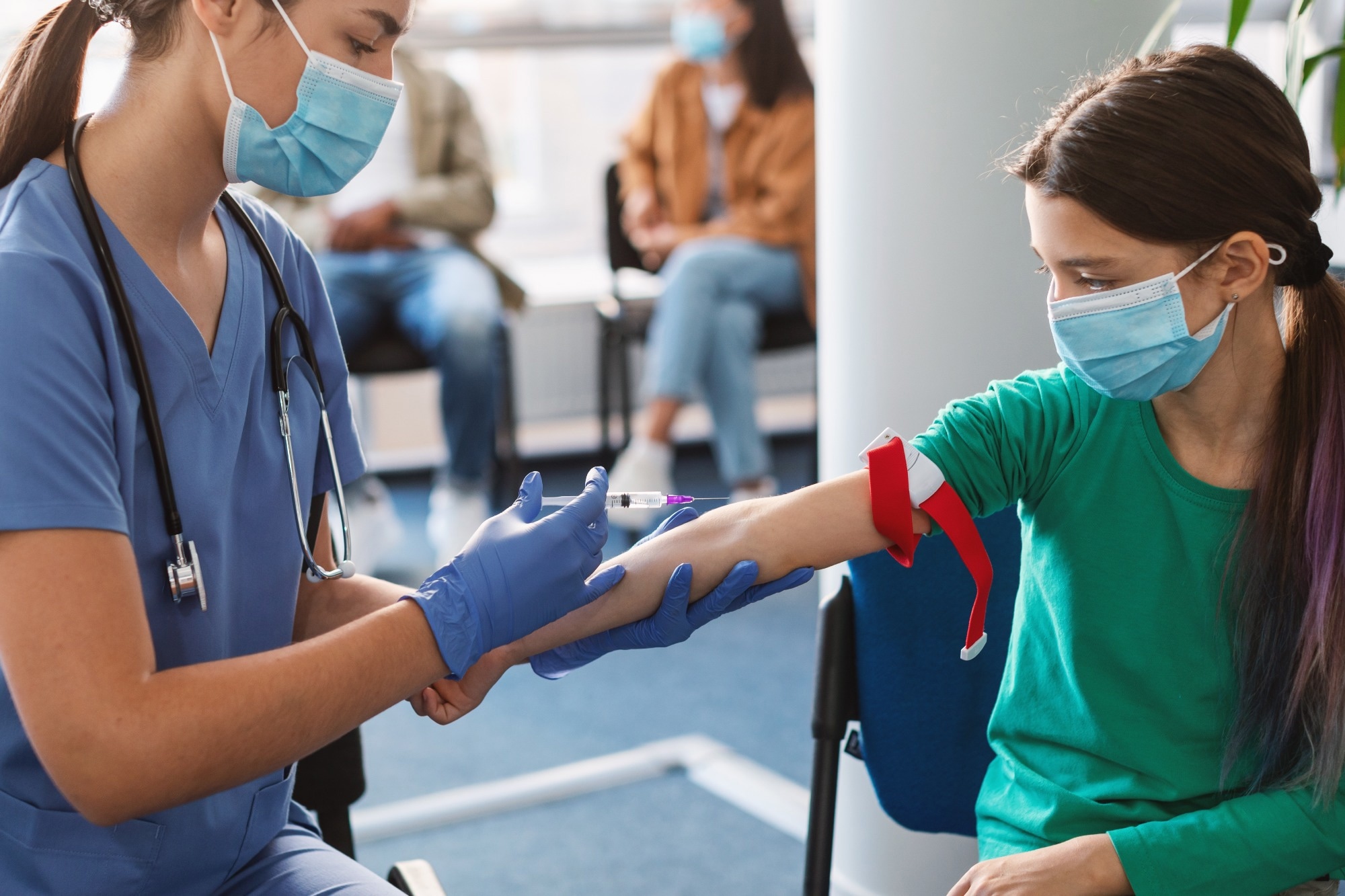It helped them examine the effects of clinical and biological factors that facilitated the development of natural and vaccine-induced SARS-CoV-2 antibodies in the general population of Italy and its long-term seroprevalence.
 Study: Long-Term SARS-CoV-2 Antibody Seroprevalence in Blood Donors, Italy. Image Credit: Prostock-studio/Shutterstock.com
Study: Long-Term SARS-CoV-2 Antibody Seroprevalence in Blood Donors, Italy. Image Credit: Prostock-studio/Shutterstock.com
Background
SARS-CoV-2 infection triggers neutralizing antibodies (nAbs) to various epitopes, including its nucleocapsid (NC) and spike (S) protein receptor binding domain (RBD). However, titers of both natural and vaccine-induced SARS-CoV-2 antibodies vary with time.
Nonetheless, assessment of time-varying SARS-CoV-2 seroprevalence in VBDs could reliably indicate the epidemiologic situation in the general population.
About the study
The present study screened 25,657 VBDs in Modena, Italy, for SARS-CoV-2 antibody responses between 2020 and 2022. The proportion of VBDs with antibodies against SARS-CoV-2 NC was 3.5% (low); accordingly, 908 VBDs tested positive for SARS-CoV-2 NC immunoglobulin G (IgG) between July and December 2020.
These individuals provided oronasopharyngeal molecular swab testing samples for clinical evaluation.
The researchers repeated serological and swab testings in these VBDs after three and 22 months. Further, the team attempted SARS-CoV-2 subtype lineage identification but failed because of very low viral loads.
Finally, they used logistic regression to evaluate risk factors for symptomatic COVID-19.
Results
At the timepoint when the COVID-19-induced lockdown in Italy ended, only 908 of 25,657 VBDs had low IgG titers against SARS-CoV-2 NC, indicating that natural infections were uncommon during the lockdown phase. Clinical evaluation of oronasopharyngeal swabs revealed that except for four, 904 samples tested negative for IgM against SARS-CoV-2 S protein.
Three months later, 33 of 908, i.e., 3.6% of individuals, had a positive oronasopharyngeal swab test, and 27 of 908 VBDS testing positive in oronasopharyngeal swab test also tested positive for NC SARS-CoV-2 IgG at baseline.
Most VBDs were healthy; however, 68, 60, and 98 VBDs had rhinitis, obesity, and hypertension, respectively. Some VBDS were on angiotensin-converting enzyme [ACE] inhibitors, of which 9.1% of ACE users and 31% of non-ACE users had symptomatic COVID-19, with p values below 0.001, as assessed by χ2 test.
Three months before their blood donation, 208 of the 908 VBDs reported symptomatic COVID-19. They had symptoms at all-time points, baseline, three- and 22-month, but they were minor and included fever and asthenia. Univariate analysis indicated that this might be due to good health and the younger age of the VBDs’.
By February 2021, except for 54 VBDs, all others received SARS-CoV-2 vaccines. Relative to unvaccinated VBDs, vaccinated VBDs had lower NC IgG titers but higher IgG titers nAbs. Interestingly, antibody types did not depend on VBDs’ prevaccination COVID-19 history.
In 2022, all symptomatic cases had higher titers of antibodies against NC, regardless of vaccination.
The authors noted that allergic rhinitis reduced the risk of symptomatic COVID-19, likely because it also reduced ACE2 receptors in the epithelial cells of lungs and airways. According to the authors, there could be a link between the treatment strategies of both these diseases.
In the general population, persons testing positive had good antibody titers yet only marginal immunity, likely due to the strict lockdown policy implemented in Italy. Thus, when infections surged after the easing of the lockdown, it created an eight-month-long emergency for hospitals.
A consistent surge in titers of antibodies against all SARS-CoV-2 epitopes (NC and others) suggested elevation of viral circulation, and while vaccination reduced the clinical severity of COVID-19 but did not cease the increase in case numbers.
Conclusions
The present study presented an interesting perspective on the epidemiological events associated with SARS-CoV-2 infections amid strict lockdown and later.
The results depicted how the elicited antibodies in a large VBD population varied before and after natural infection and SARS-CoV-2 vaccination.
Thus, during the two-year study duration, SARS-CoV-2 antibody titers surged despite a notable decline in the risk of symptomatic COVID-19.